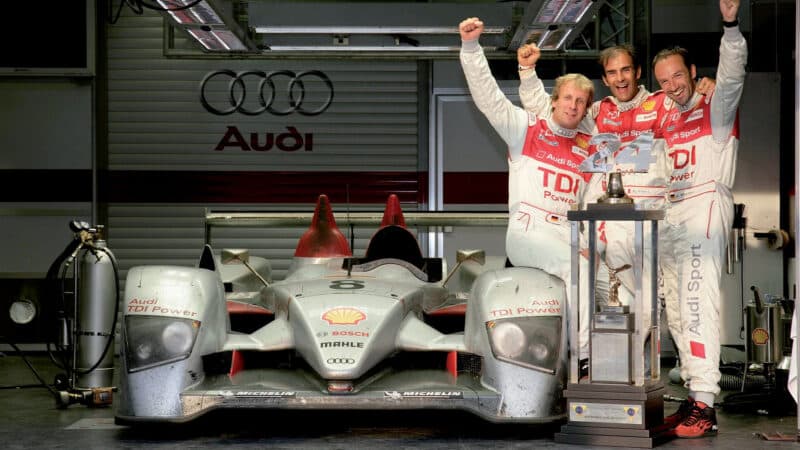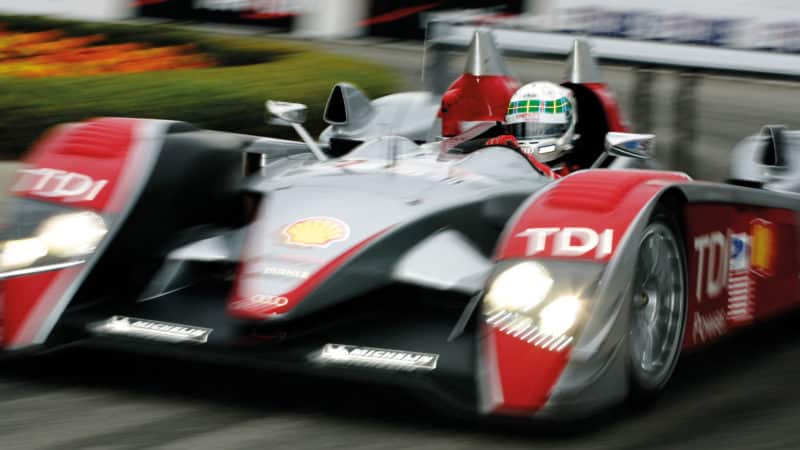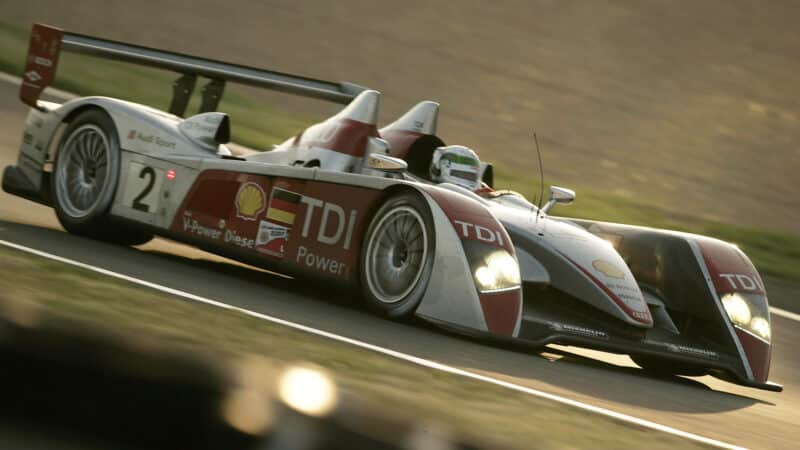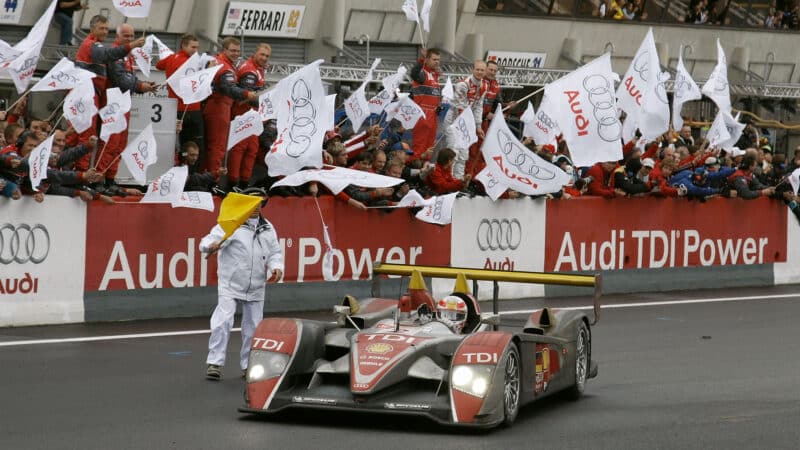Originating from a late night discussion in a bar between Audi’s engine guru Ulrich Baretzky and a pair of ACO officials, the engineer decided that the German giant’s R10 successor would not be petrol powered but, for the first time, diesel.
That tentative chat first occurred in 2001, and when Baretzky presented the idea to the Audi board, support wasn’t exactly unanimous – as he remembered in 2016.
“They must have thought I was a little bit crazy,” he says. “Whenever I suggested it to anyone, they looked at me as though to say, ‘You are an honourable man and have been successful, but isn’t that a little bit too much, a little bit too strange?’”
However, the idea would eventually take hold due to its road relevance, a key reason for Audi’s involvement in sports car racing in the first place.
“We wanted to push the sportiness of the diesel,” said Ullrich, “and the best way to do that was through motor sport.”
Once the car was up and running for test sessions, McNish describes the arresting experience of driving the R10.

Winning No6 car at Le Mans 2006 (left – right): Frank Biela, Emanuele Pirro, Marco Werner
Audi
“When Baretzky said the successor to the R8 was going to be powered by diesel I thought he had been smoking something or drinking too much schnapps. Was it just a PR fad?” McNish recalls.
“We always had a press conference at the Essen show and Frank Biela had just come back from testing the R10 at Vallelunga for the first time. He was the first to drive it and Tom [Kristensen], Dindo Capello and I were sitting there. So what was it like? He just smiled, then said. “You’ll never believe it, guys.” He couldn’t put it into words, because of the torque, the lack of noise. The sensations were so different to what we were used to. I drove that car for the first time at Sebring and there are a few things I remember from that first test.






